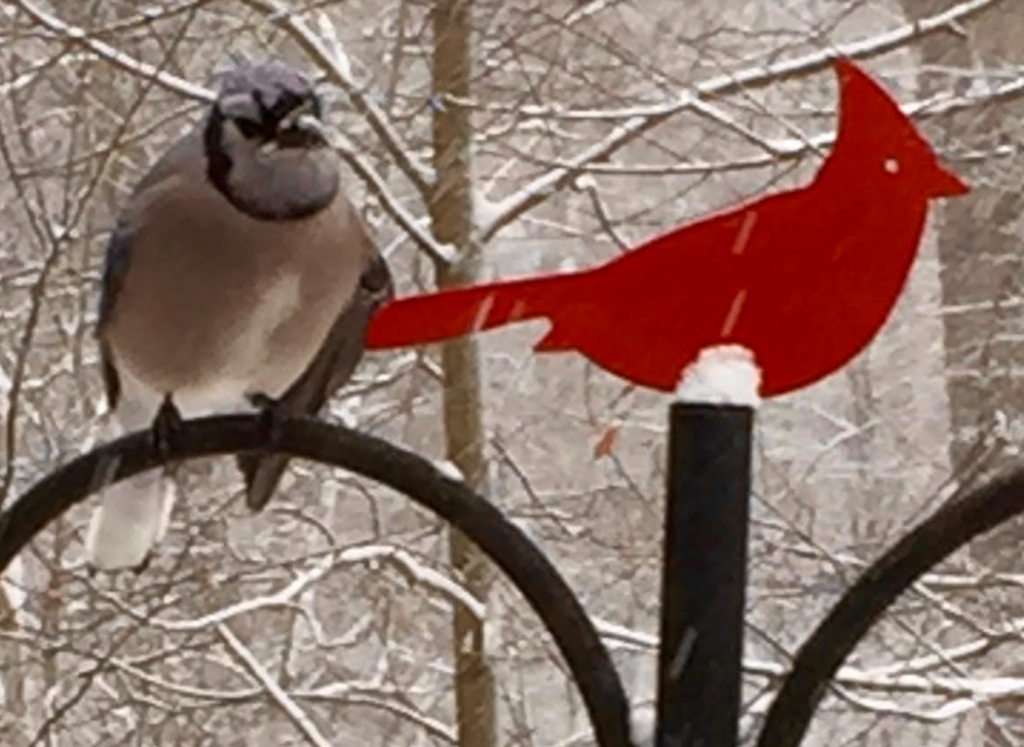Understanding Winter Bird Behaviour For Successful Winterwatch

Table of Contents
Food Sources and Foraging Strategies in Winter
Winter presents significant foraging challenges for birds. To survive, they adapt their diets and techniques, making understanding these changes essential for successful winter birdwatching.
-
Increased reliance on seeds, nuts, berries, and suet: Many birds switch to high-energy foods like sunflower seeds, nuts (especially acorns and beechnuts), berries (like holly and hawthorn), and suet (rendered beef fat). These provide the necessary calories to withstand cold temperatures.
-
Changes in foraging locations: As natural food sources become scarce, birds may venture closer to human habitats, visiting gardens, bird feeders, and even urban parks in search of sustenance. This offers excellent opportunities for winter birdwatching.
-
Competition for food sources and territoriality: The scarcity of food often leads to increased competition between birds. You might observe territorial disputes as different species vie for access to limited resources. Observing these interactions adds another layer of interest to your winter birdwatching.
-
Importance of identifying key winter food sources in your area: Knowing what food sources are available in your local area will help you predict where birds are likely to congregate. Researching the common plants and trees that produce winter berries and nuts will significantly enhance your winter birdwatching success.
For example, finches like goldfinches and siskins flock to areas with abundant seeds, while woodpeckers skillfully forage for insects hidden under tree bark. Snow cover significantly impacts foraging; birds may have difficulty accessing food buried beneath the snow, leading them to more exposed areas.
Winter Roosting Habits and Shelter
Finding adequate shelter is critical for bird survival during winter. Understanding their roosting habits is key to locating and observing them effectively.
-
Seeking shelter from wind, snow, and predators: Birds will actively seek protection from the elements and potential predators. This often involves finding dense vegetation, rock crevices, or even human-made structures.
-
Utilizing dense vegetation, tree cavities, and human-made structures: Evergreen trees, dense shrubs, and even birdhouses provide excellent protection from wind and cold. Tree cavities are favoured by many species, offering shelter from the elements and predators.
-
Communal roosting to conserve heat: Many bird species, like starlings, will roost communally in large flocks, sharing body heat to stay warm. This behaviour provides amazing winter birdwatching opportunities.
-
Observing roosting sites for better winter birdwatching opportunities: Identifying likely roosting sites, such as dense hedgerows or sheltered corners of buildings, can dramatically improve your chances of observing birds, especially during dawn and dusk.
Different species exhibit varied roosting behaviours. Owls, for example, typically roost solitarily, while starlings form massive communal roosts. Providing natural or artificial shelter in your garden—such as dense shrubs or bird boxes—can encourage birds to stay nearby, making them easier to observe during your winter birdwatching sessions.
Migration Patterns and Winter Residents
Distinguishing between migratory and resident birds is fundamental to successful winter birdwatching.
-
Identifying birds that migrate to warmer climates: Many bird species migrate to warmer regions to escape the harshest winter conditions. Understanding which species are migratory and which remain resident is crucial for accurate identification.
-
Recognizing winter resident species that stay throughout the year: Some birds are well-adapted to winter conditions and remain in the same area year-round. These birds offer consistent winter birdwatching opportunities.
-
Understanding factors affecting migration timing: Factors such as temperature, food availability, and day length influence when birds migrate. Monitoring weather patterns can help predict when migratory birds might be passing through your area.
-
Using bird identification guides to distinguish between winter residents and migrants: Reliable field guides with detailed descriptions, illustrations, and range maps are essential for accurate identification of both migratory and resident birds.
For instance, many warblers and swallows migrate south for the winter, while robins, wrens, and many woodpeckers are common winter residents in many temperate regions. Using a good field guide, combined with knowledge of migration patterns, significantly enhances your winter bird identification skills.
Winter Birdwatching Techniques for Success
Successful winter birdwatching requires specific techniques and strategies.
-
The importance of patience and quiet observation: Winter birds are often less active than in summer; patience is crucial. Minimize noise and movement to avoid disturbing them.
-
Using binoculars and spotting scopes for better viewing: High-quality optics are essential for observing birds at a distance, especially in winter when they may be less visible.
-
Utilizing bird feeders and bird baths to attract birds: Strategically placed feeders and bird baths can draw birds closer to your observation point, providing excellent winter birdwatching opportunities.
-
Understanding the impact of weather on bird activity: Bird activity levels vary with weather conditions. Birds may be less active during heavy snow or strong winds.
-
Photography tips for capturing stunning winter bird images: A high-quality camera with a telephoto lens allows you to capture memorable winter bird images. Remember to prioritize the well-being of the birds while photographing them.
Choosing the right location, utilizing camouflage, and timing your observations—especially during dawn and dusk—can significantly improve your winter birdwatching success. Remember to practice ethical birdwatching, minimizing disturbance to the birds and their natural habitat.
Conclusion
Understanding winter bird behaviour is key to a successful and rewarding winterwatch experience. By learning about their food sources, roosting habits, migration patterns, and employing effective observation techniques, you can significantly improve your chances of spotting and identifying a wider variety of winter birds. So grab your binoculars, warm up your layers, and embark on your next winter birdwatching adventure! Remember to observe birds responsibly and enjoy the beauty of these resilient creatures during the cold winter months. Happy Winter Birdwatching!

Featured Posts
-
 Renowned Cinematographer Lin Tsan Ting Dies At 94 Legacy Of Golden Horse Award Winning Work Remains
May 13, 2025
Renowned Cinematographer Lin Tsan Ting Dies At 94 Legacy Of Golden Horse Award Winning Work Remains
May 13, 2025 -
 Nba Draft Lottery Quiz How Well Do You Know The Winners Since 2000
May 13, 2025
Nba Draft Lottery Quiz How Well Do You Know The Winners Since 2000
May 13, 2025 -
 Understanding The Adhd Brain A Journey Inside Our Adhd Minds
May 13, 2025
Understanding The Adhd Brain A Journey Inside Our Adhd Minds
May 13, 2025 -
 Is There A Pattern Examining Leonardo Di Caprios Romantic Relationships
May 13, 2025
Is There A Pattern Examining Leonardo Di Caprios Romantic Relationships
May 13, 2025 -
 Sabalenka Falls To Ostapenko In Stuttgart Open Final
May 13, 2025
Sabalenka Falls To Ostapenko In Stuttgart Open Final
May 13, 2025
